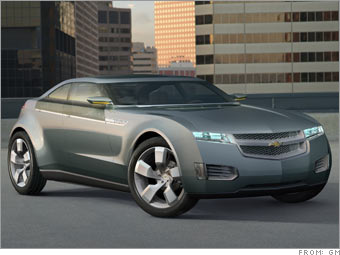Both vehicles use "series hybrid" systems. That means that the wheels are powered, at all times, by an electric motor only.
In the Volt's case, a small gasoline engine can charge the car's batteries as needed. As with the HySeries Ford, the batteries can also be charged by plugging into a wall outlet for a few hours. The HySeries Ford Edge uses a hydrogen fuel cell instead of a gasoline engine, but both Ford and GM say that either vehicle could use either type of power source.
One major advantage of a series hybrid is that it allows that sort of flexibility. Since the powerplant isn't hooked up to the wheels in any way, it's much easier to change from one radically different engine type to another.
Another advantage, in the event that a gasoline or diesel engine is used, is that the engine can operate at its most efficient speed at all times, never needing to run faster or slower as the car's speed changes.
The challenge with a system like this is that it takes a lot of energy to drive a vehicle at high speeds while delivering the kind of performance drivers expect. It won't be enough for the Volt to just get to 65 miles per hour. It has to get there and still be able to accelerate if the driver needs to.
That means the Volt or HySeries will need really powerful batteries. GM says it is working with battery companies to create something that's up the task.

